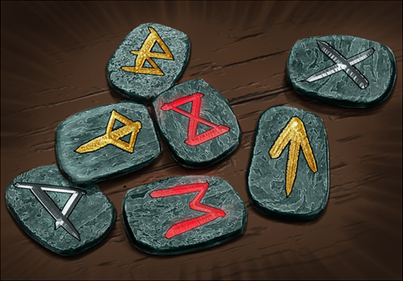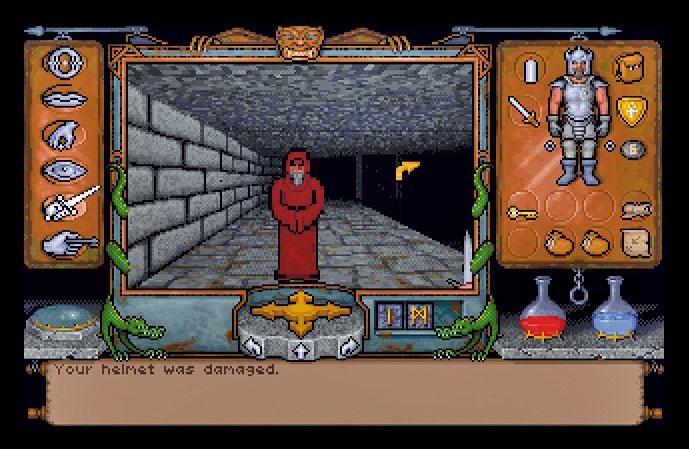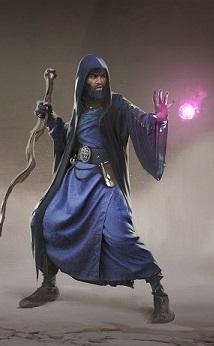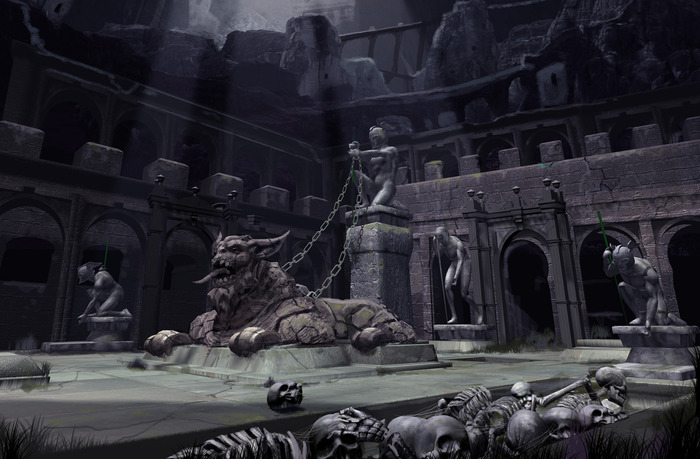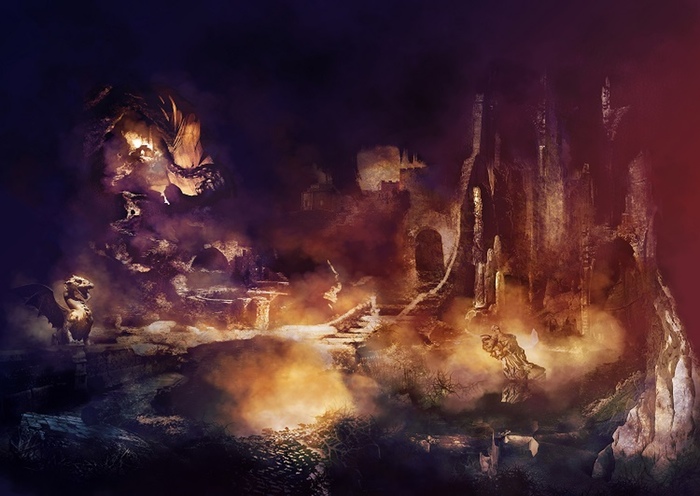Update 44
Do you believe in magic?[edit]
May 15 2015
Hello Under-lings! For this week’s update, Tim Stellmach has a lot of interesting tidbits on how the design of the Underworld Ascendant magic system will work. Then we have a first look at an upcoming stretch goal unlock: the Necropolis of the Ancients. Interested? Read on!
Making the Magic Happen[edit]
In this early stage of Underworld Ascendant development, the fundamentals of the core game systems are a major design focus. We are fleshing out systems for movement, combat, character abilities, object interactions, and more. Right now, I’m up to my elbows in the magic system. The details are constantly changing (here I am, changing them), but the goals and overall approach are constant. So this week, we’d like to share a little bit about our direction for the game’s magic system.
As longtime fans will know, players chose spells in Underworld 1 & 2 by selecting sequences of collectible rune stones. One such sequence could be prepared at a time, indicating a spell that could then be cast repeatedly (while the character’s mana held out). Each rune was associated with a meaning such as “light” or “harm,” and the rune formulas for different spells had a kind of logic based on those meanings. This helped it to feel that certain laws of magic underlay the system, and players could even guess a few undocumented spells based on rune meanings.
The magic system in the original Underworlds was very well received, and a lot of things about it still hold up well today. There are also aspects of it that didn’t work as well, and things people liked which we hope to do even better. So, Underworld Ascendant takes that magic system as its jumping-off point, changing and improving the system where it seems appropriate.
First, as with every other aspect of the game, we’ll be modernizing the user interface. I’m developing systems now to reduce the large mouse-clicking overhead, making casting more streamlined and making it possible to switch prepared spells more smoothly.
- Yeah, we'll modernize this a bit...
Other changes in our approach to magic reflect the wider context of what we’ve learned about character progression in our years of development experience. The skill and progression systems in the 90’s took a lot of cues from pen-and-paper RPGs that don’t necessarily work as well through the veil of automation. As a simple example, maybe you have to make a die roll to successfully cast a spell in a tabletop game. You can see all the die rolls, because you’re the one rolling. But on a PC, if you try to cast a spell and it doesn’t work, the veil of automation can make that failed die roll hard to tell from a lost mouse click. So in Underworld Ascendant, the whole character skill system will be getting an overhaul to reflect the last 25 years’ advancement in user experience, and the magic system is no exception.
More fundamentally, we’d like to capitalize on the strong concept of the game’s rune language. As evocative as it was in the original Underworld games, players were ultimately still limited to a set of pre-authored spells. In Underworld Ascendant, we’ll be experimenting with using the runes as a true language for varying different aspects of players’ spells procedurally. For example, some Underworld spells had more powerful versions tagged with the “Vas” rune. But what if you could change the power level of any spell? Maybe change the way a spell is delivered to its target, or how it draws its mana? We have a number of ideas to try out, and these kinds of tests are a great opportunity afforded to us by our early access backers.
Finally, what it even means to be a wizard has changed as our culture has developed new ideals about adventurers of every kind. Gamers in the early 90’s had never seen Crouching Tiger, Hidden Dragon. We can’t help but be influenced by Thief and the explosion of other stealth-action games since 1998. Truly fantastic abilities in RPGs are no longer the exclusive domain of spell casters. So the whole spell list is being reconsidered top to bottom, to make sure that each character building strategy has its own distinctive style and advantages. Hint: spider climb will not be a wizard spell, but not to worry, they’ll have other options of their own.
Hope you have enjoyed this look into our thought process on magic. Let us know what you think of this design direction in the forums!
Until next time!
Lead Designer Tim
Welcome to the Necropolis[edit]
As of the writing of this update, we are just $7,648 away from reaching our $900,000 stretch goal of language localization for Underworld Ascendant. This stretch goal is important in allowing our fans from across the world to have a better experience playing the game.
So, with reaching the localization goal almost a certainty, we can look forward to what’s next on the horizon at the $950,000 funding level: the addition of the Necropolis to the Underworld.
- concept art we showed during the Kickstarter
Deep in the eldritch darkness of the Stygian Abyss lies the foreboding Necropolis of the Ancients. Teaming with the restless dead and wandering spirits of a long-forgotten people who once lived and thrived in the Underworld, these catacombs pulsate with malevolent intent for those who still cling to life.
- New concept art fresh from Dave!
For those not frightened of the dead nor the cool dry grasp of the grave there are untold secrets to uncover in this decrepit place. Carved with moans into the Necropolis’ crumbling walls, and scrawled into its dusty floors with sighs, is the tragic history of this once great people. What messages reside there? What admonishments? The Necropolis is crying out a warning to the Underworld, who dares to hear what it says?
Other Stuff[edit]
OtherSide is happy to announce that Joe Fielder, who’s been helping shape Underworld Ascendant’s narrative the last few months, has come aboard full-time as Design Director. Joe’s worked as a writer, designer, producer, and creative director on games like BioShock Infinite, BioShock Infinite: Burial at Sea, Lost Within, The Black Glove, BOOM BLOX, and the Medal of Honor series. He’ll be helping guide Underworld Ascendant’s player experience (the place where level design, systems design, and narrative all meet), digging deep into the game’s world-building elements, and more.
Next Wednesday, May 20th from 1pm to 2pm EDT we will be Twitching a play session of Dark Messiah of Might and Magic. Join Paul, Chris, Tim and Scott as we delve in to this game’s lauded combat system. What are the lessons to learn from Dark Messiah’s motion based combat mechanics? What parts should we aspire to use in Underworld Ascendant? What should we avoid? All good questions that will (hopefully) be answered while we play this classic fantasy game from 2006!
The OtherSide Team
